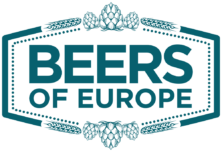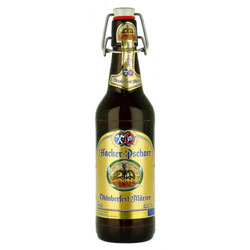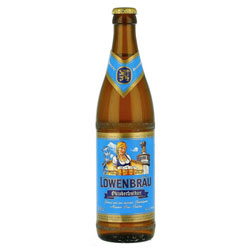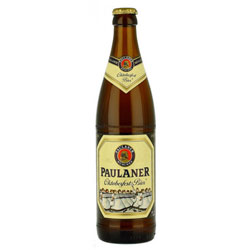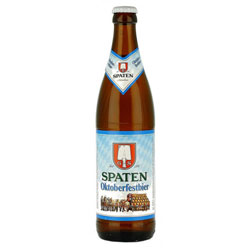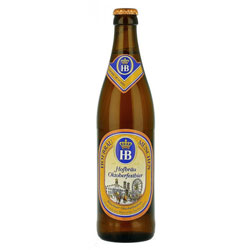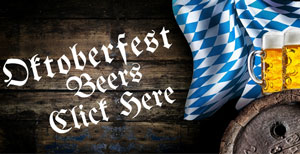Beers of Europe News, German Beer and Breweries, Celebrations
Oktoberfest beers Arrive Early
The world’s biggest beer festival arrives at Beers of Europe
Oktoberfest beers arrive early to Beers of Europe
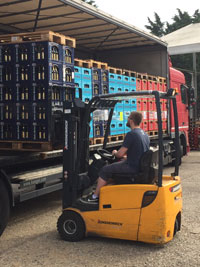
From Munich, Germany to Norfolk, England…
Every year, 6 million people flock to the fields outside Munich to enjoy the world’s biggest beer festival Oktoberfest, which was first held in 1810 to celebrate the marriage of Prince Ludwig and Princess Therese. Munich’s most popular breweries produce a special Oktoberfest beer for the event which is scarcely available in the UK.
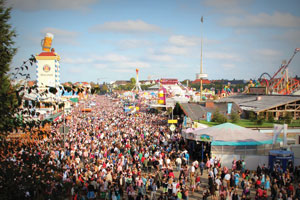
Whilst the festival doesn’t start until the 21st of September, the beers have already arrived at Beers of Europe, Britain’s Biggest Online Beer Retailer, making them the first place in the country to stock the sought-after Munich beers.
Speaking just after the Oktoberfest beers arrived this morning at their warehouse in Setchey, just outside King’s Lynn, Marketing Manager Amanda Waterfield said:
“Going to the festival is a fantastic experience, but if you can’t make the journey to Bavaria, Beers of Europe gives you the next best thing, you can buy and taste the beer and also we are the first to stock it in the UK. Nowhere else in the country have the Oktoberfest beers been delivered earlier than Beers of Europe and that is credit to the great relationship we have built over the years with our suppliers. Being able to deliver across the country in quick fashion means our customers get a taste before anyone else – win! win! plenty of happy beer-drinkers!”.
Beers of Europe have the Oktoberfest beers from five* of the six biggest Munich breweries, Hacker-Pschorr, Hofbräuhaus , Löwenbräu , Paulaner and Spaten. The beers will be available in several formats, including a mixed 12 box, a mixed 24 box, 2 bottles with a stein as well as on their own. The beers are seasonal and will likely only be in stock until December. The sheer amount of customer requests for the return of Oktoberfest is the driving force for its prompt arrival and Beers of Europe look forward to a successful festival season.

Beers of Europe is a family run business based in Setchey, just outside King’s Lynn. Since 2000, the Clark family have built up a range of over 5000 products, including beers, ciders, wines, spirits and much more from all over the world. If you don’t have the chance to visit the shop in person, then you can view all things Oktoberfest, as well as the entire range of weird and wonderful products online at www.beersofeurope.co.uk
*About Oktoberfest Beers:
Hackerbrau had been brewing since the 14th century with limited success but became a joint venture further down the line in 1793 when Joseph Pschorr married into the Hacker family. His expertise helped put the joint venture of Hacker-Pschorr at the centre of the city’s business scene. By 1820, Hacker-Pschorr was widely considered the best Brewery in Munich, ahead of its other big city rivals. Just 14 years later in 1834, Joseph handed the company to his two sons, George and Matthais, who ran the two sides of the business Pschorr and Hacker respectively. The sons divided the company into two separate wings and both of them prospered individually. This could have been the end of the Hacker-Pschorr company was it not for tragedy. In 1944, a bombing raid by the allies destroyed the Pschorr brewery, effectively ruining the company. However Hacker offered to let Pschorr brew at their brewery twice a week until the repairs on their factory were completed. Blood proved to be thicker than water as the two breweries joined together again in 1972 to become Hacker-Pschorr Brau once again. Today the company is owned by Paulaner but still operates independently.
Hacker-Pschorr has played a massive part at Oktoberfest. Joseph Pschorr was personally commissioned to brew a commemorative beverage for the event. However with the split of the brewery in the city, there was a split in the brewery at Oktoberfest too and even today there are separate tents for Hacker and Pschorr, both selling the Munchen classic Hacker Pschorr Oktoberfest Marzen. The Hacker-tent and Pschorr Braurosl are two of the largest tents at the festival, both built by tradition, serving excellent food and beer to the sound of music, and yodelling, naturally.
This is a darker brew than the others, appearing a dark yellow/ amber in colour with a lacing white head. The aroma brings sweet malts to the attention with subtle caramel and butter tones developing. It has a moderately sweet flavour with the caramel further on display with a scent of lighter notes, almost honey-like. Its soft carbonation makes for a smooth finish and the final product cements its place as a big six brewer in Munich, and a fiercely popular Oktoberfest beer across the world.
It is difficult to pinpoint the exact date that Lowenbrau began its journey, but the earliest documented reference to an Inn called ‘Zur Lowen’ showed that beer was being brewed at 17 Löwenbruge Straße back in 1383. As was standard practise back then, the Landlord brewed his own beer, and it is from this place and time that the brewery grew from strength to strength to the global powerhouse it is today. 1746 is the first mention of Lowenbrau in the Munich tax records as a brewery and a move to a larger residence in 1851 paved the way for Lowenbrau and its famous Lion logo to produce a quarter of the entire cities’ output just twelve years later in 1863. The brewery was destroyed in 1945 by an air raid carried out by the Allies. Once rebuilt, it began to distribute internationally to be known as one of the big six Munich breweries, with their beers backing up such a prestigious title.
Having demonstrated superiority in brewing by upholding the 1516 German Purity Laws, they know how to brew good beer, and their Oktoberfest is no different. Since 1810 Lowenbrau have provided the citizens of Munchen with their annual special to celebrate the world famous festival. It is a limited edition brew that is only produced in Germany, not under license abroad, which guarantees its rarity along with its quality. Sponsoring two tents at the festival, their presence is made clear with a 4.5 metre tall Lion on the building that roars the brewery name.
At 6%, this is a stronger brew than Lowenbrau Original, and appears a pale yellow in colour with a white head. Sweet malts on the nose with notes of caramel and grain complete the aroma. This medium bodied beer has a malt taste with a hint of hop bitterness as well as mild spice flavours. The strength of the brew ensures lasting warmth in the finish. Served slightly chilled in a Stein glass if possible, but you do not need to go out of your way and get a German pretzel to enjoy this easy drinking beverage, it is refreshing and satisfies just on its own.
The first official record of Paulaner is not your traditional story about its rise to grace, but instead is a letter, more specifically a complaint to the Munich town council in 1634. Paulaner did not start off life as a brewery, but as a way of life, helping Monks at the ‘Neudeck ob der Au Monastery’ get through their period of Lent. The beer that they brewed, strong and dark became known as Salvator, and any they had going spare went straight to the poor of the city, or the Monasteries tavern. The breweries in the area were complaining about Paulaner supplying free beer to the local citizens, therefore putting dents in private breweries profits. It wasn’t until 1773 that Paulaner recruited Valentin Stephan Still as a Brewmaster at the Monastery, and his innovation led Paulaner on a path for greatness, becoming the largest producer by the end of the century. It was then bought by Franz Xaver Zacherl in 1806, who expanded the brewery and lends his name to it in the present day. Its continued growth throughout the next two decades as well as its modern brewing techniques bringing old recipes to life makes Paulaner a stand out performer on the brewing stage. An instantly recognisable brand and a loyal following ensures its position as a big six brewer in Munich and with the largest brewery of the six at that.
In 1815 it makes its first appearance at the world’s largest beer festival, Oktoberfest. Its growth over time at the festival has led to it having three large tents exclusively serving Paulaner, these are the ‘Festzelt Winzerer Fähndl’, ‘Armbrustschützen-Festhalle’ and the ‘Käfer’s Wies’n-Schänke’. The largest of the three, the Paulaner Winzerer Fähndl is one of the most popular beer tents at the event and it is well recognisable from the Giant tower outside the tent with a revolving stein of Paulaner on the top that has a supposed capacity of 42,300litres.
The Paulaner Oktoberfest beer pours yellow in colour with a decent head. A sweet aroma from the hops is evident on the nose with tones of caramel and malt. The taste is that of grains with the sweetness of the malt balancing out the slight hop bitterness, which is more apparent in the lengthy finish. Nothing better defines Oktoberfest more than beer, and nothing better defines beer than a bottle of Paulaner. To be thoroughly enjoyed with traditional Bavarian food or perfect on its own.
Spaten was first founded in 14th century, with the Munich Tax bill of 1397 registering a brewer by the name of Herr Spaeth on the property of ‘Welser Prew’ brewing his own Oberspathbräu. The building would go on to play a massive part in Spaten’s history, outliving many Brewery owners during the 15th century. It then ran under the ownership of several different families across the next few centuries, the Stamberger Family 1522-1622, the Spatt Family 1622- 1704 (The family that gave their name to the brewery we know today) and the Siessmayr Family 1704-1807. Whilst the business was kept alive and well, it never truly prospered until it entered the hands of one of Munich’s most famous brewing families, the Sedlmayrs. Gabriel Sedlmayr was the master brewer to the Royal court of Bavaria and bought Spaten, then the smallest brewery in Munich, with ambitious plans to turn it to greatness. His death in 1837 brought an end to his reign, but his sons promptly took over with aspirations of their own. Gabriel’s son Joseph soon left to own the Leist-Franziskaner brewery, whilst the other son, also called Gabriel, ran the Spaten brewery. Come 1867, Spaten is the largest brewery in Munich, a title it retained until the 1890’s. The 20th century brought Spaten and Leist-Franziskaner (Both still owned by the Sedlmayr family) together to form a joint stock family. Later on in 1997, celebrating its 600th anniversary, Spaten merges with Lowenbrau, but both still stand independent with their products and brand.
Spaten has played a pivotal part in Oktoberfest over the years, being the first of the big six to brew an amber Marzen style beer, thus birthing the idea of brewing a special beer specifically for the festival. More recently, since 1950, the Mayor of Munich has personally tapped the first keg of beer in the Schottenhamel tent, which marks the beginning of Oktoberfest. The onlookers and citizens of Munich judge the Mayor on his ability to strike the cask as they see it as a good judge of character and whether he is a good fit to his role as Mayor.
Spaten Oktoberfest pours a yellow colour and has a decent, long lasting white head. The aroma highlights the malts in the beer, with toasted grains as well as hops also lurking. The flavour of the Marzen beverage is sweet with a bitter taste and a few mild spice notes, followed by a hoppy finish. To be served in traditional Stein glass with a hearty dish but just as perfect on its own. An authentic tasting Oktoberfest beer that oozes history as well as quality.
Hofbrauhas is the smallest brewery at the Oktoberfest and one with the shortest Oktoberfest history. Hofbrau brewery has been around since 1589 but,wasn’t sold before at the Oktoberfest before 1950.
For a long time, Munich’s court society wasn’t a big fan of the local brews at all, which lead to regular imports of beer from North Germany, especially from Einbeck, where brewers would produce an extraordinarily strong beer for special occasions to make it exportable. the imported beer was expensive, which lead to Duke Wilhelm V of Bavaria (1548-1626) to founding an own brewery at Burg Trausnitz in Landshut, where he grew up.
After moving to Munich, he also wanted to have his court supplied with local beer there and opened the ducal court brewery (Herzogliches Hofbräuhaus) at the Alter Hof (old court) on September 27 1589. Soon, its brown beer (Braunbier) was also sold publicly. The desire for the good beer from Einbeck, however, was at least as strong as the beer itself. Consequently, in 1612 a brew master from Einbeck, Elias Pichler, was recruited to produce “Ainpöckisch Bier” in Munich. Its name was bavarified to “Oanbock” in Munich and later abbreviated to Bock. This seasonal Starkbier (strong beer) is still brewed today by Hofbräuhaus and sold as “Maibock” in May.
Today, Hofbräu isn’t specifically known for its Weißbier, although the history of Weißbier in Bavaria is closely tied to the Hofbräuhaus. The production of this beer style, which originates in Bohemia, was prohibited in Bavaria after the purity law of 1516, as wheat was exclusively reserved to be used for making bread. Only two noble families from Lower Bavaria kept the right to brew Weißbier. Duke Maximilian I transformed the ban into a profitable state monopoly and recruited the first Weißbier master for the Hofbräuhaus in 1602. At first, both brown and white beer were produced in the brewery of Alter Hof, but only five years later, the production of the popular Weißbier moved into the new “Weißes Hofbräuhaus” (White Court Brewery) at Platzl. The old brown brewery merged with the white one in 1808.
The Hofbräuhaus is today mainly known for the legendary restaurant at Platzl, which was established by King Ludwig I in 1828. Before that, only the Maibock was served to the public there in May. In 1896, the brewery had to move a second time, as it became larger and larger, without having sufficient space for expansion at Platzl. Its new location at Wiener Platz, which already had a storage cellar at that time, remained the home of the brewery until April 6 1987, when a fire destroyed it. Today, the brewery resides in the outskirts, in Riem, while the restaurant Hofbräukeller is still present at Wiener Platz.
The first time, Hofbräu beer has been served at Oktoberfest, was in 1950 in the Schottenhamel-Festhalle. This was only due to a dispute, in which the Schottenhamels didn’t agree on a bee price with Spaten. Since 1952, Hofbräu has its own tent.



